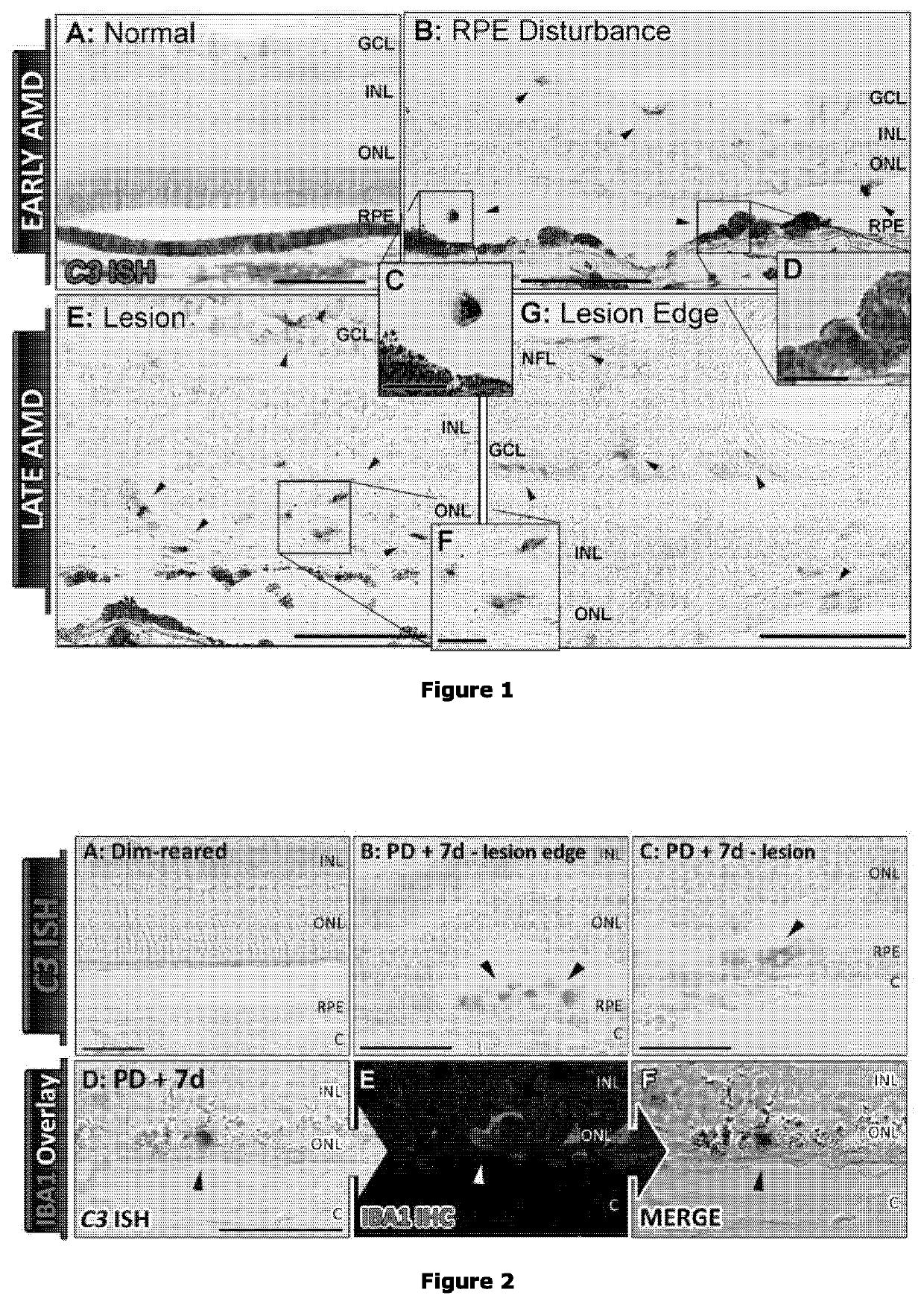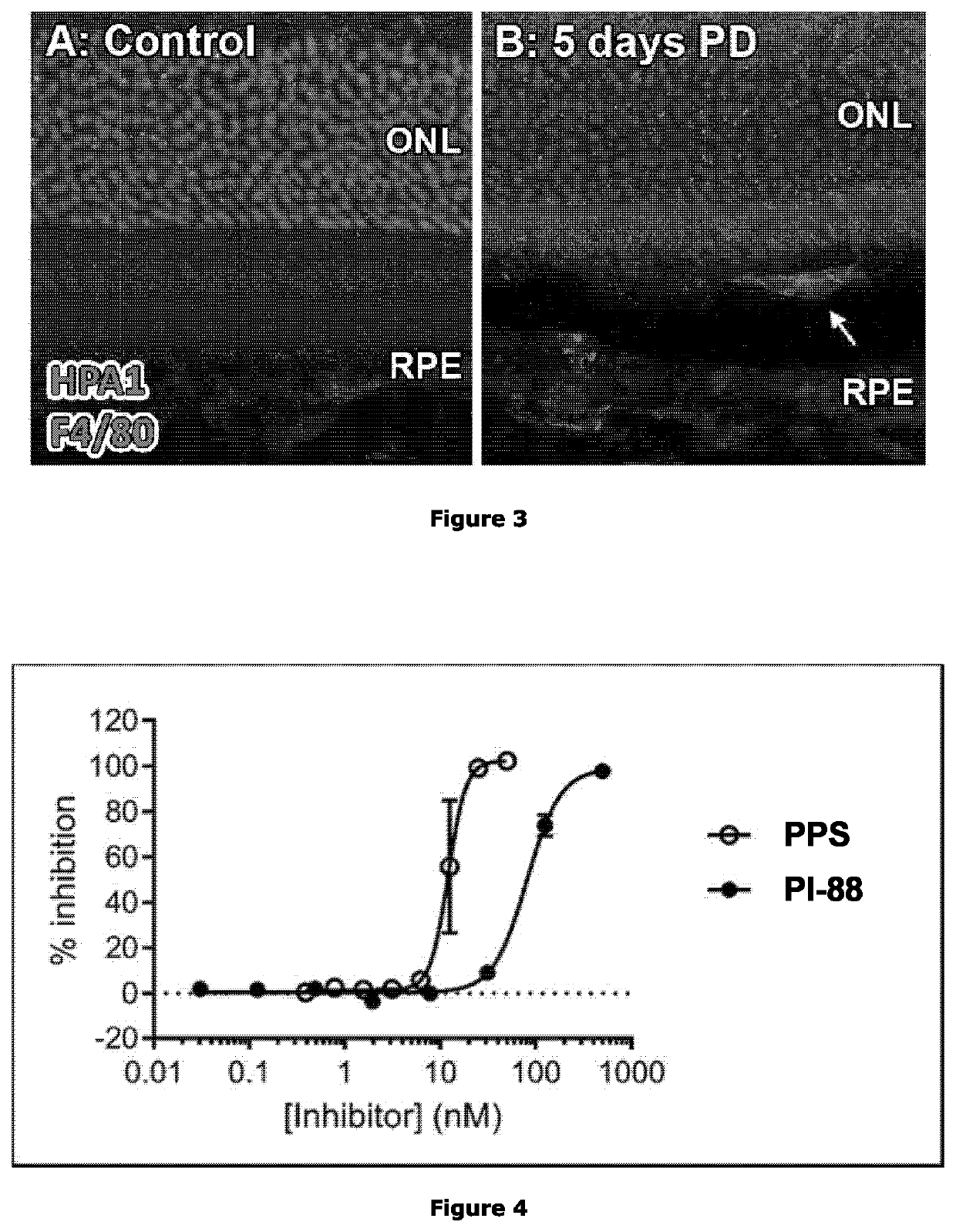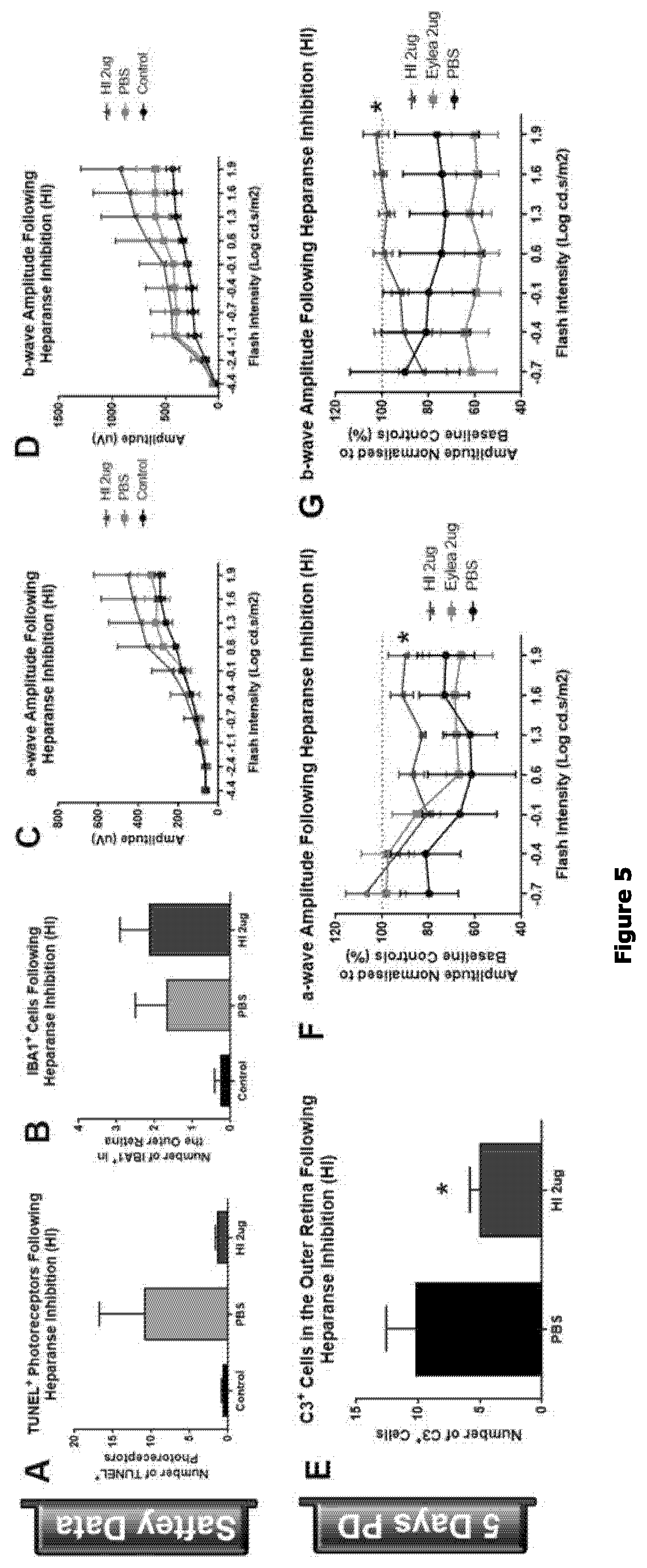Methods of Treating Ocular Disorders
a technology of ocular disorders and heparanase, applied in the field of heparanase inhibitors, can solve the problems of loss of vision in the center of the visual field, further damage, and chronic local inflammation
- Summary
- Abstract
- Description
- Claims
- Application Information
AI Technical Summary
Benefits of technology
Problems solved by technology
Method used
Image
Examples
example 1
omplement Deposition by Macrophages Following Retinal Damage
Materials and Methods
Animal Experimentation
[0351]All experiments were conducted in accordance with the ARVO Statement for Use of Animals in Ophthalmic and Vision Research. The study was approved by the Australian National University Animal Experimentation Ethics Committee. C57BL63 mice were born and raised in 12:12 hrs light:dark cycle of 5 lux in individually vented cages, with free access to food and water. Age-matched adult mice (8-10 weeks) were randomly assigned to light damage and dim-reared control (non-light damage) groups. Animals of the light damage group were continuously exposed to 100 k lux white LED light for 1, 3, 5, and 7 days. Pupils were dilated twice daily at 10 am and bpm with a single drop of 1% atropine sulfate (8.3 mg of atropine). Dim-reared control animals were also pupil dilated twice each day, but were returned to dim cyclic light (12:12 hrs light:dark, 5 lux light). Even distribution between male...
example 2
e and Complement Expression in Activated Macrophages Following Retinal Photoreceptor Cell Death
Materials and Methods
[0358]Quantitative real-time polymerase chain reaction (qPCR) RNA extraction and purification was performed on IBA1+ microglia / macrophage cells from retinas following light-induced retinal photoreceptor death using a combination of TRIzol reagent (Thermo Fisher Scientific) and an RNAqueous Total RNA Isolation Kit (Thermo Fisher Scientific) as described previously (Natoli et al. (2008) Mol Vis, 14: 1983-1994). cDNA was prepared from 500 ng of each RNA sample using a Tetro cDNA Synthesis Kit (Bioline Reagents, London, UK) according to the manufacturer's protocol. Gene expression changes were measured via qPCR using Taqman hydrolysis probes and Taqman Gene Expression Master Mix (Thermo Fisher Scientific). Each qPCR was run using a QuantStudio 12K Flex instrument (Applied Biosystems). Analysis was performed using the comparative cycle threshold meth...
example 3
Heparanase Inhibitors on Macrophage Activation and Complement Deposition
Materials and Methods
Heparanase Enzyme Inhibition Assay
[0361]Heparanase assays were conducted as described previously (Hammond et al. (2010) Anal Biochem, 396(1): 112-116). Recombinant human active heparanase derived from Chinese hamster ovary cells was from R&D Systems. Bovine serum albumin-coated 96 well microplates (96F Maxisorp NNC #456537, Thermo Scientific) were used for the assays and were prepared by incubation of the plates with 1% (w / v) BSA dissolved in phosphate-buffered saline containing 0.05% (v / v) Tween-20 (PBST) at 37° C. for 1 h. The plates were washed three times with PBST, shaken dry, and stored for up to two weeks at 4° C. before use. Assay mixtures typically contained 42.5 mM sodium acetate buffer (pH 5.0), 0.8 nM heparanase, 100 μM fondaparinux (Arixtra™, Aspen Pharmacare), 5% (v / v) dimethyl sulfoxide (DMSO), and varying concentrations of inhibitor in a total volume of 100 μL. Following init...
PUM
 Login to View More
Login to View More Abstract
Description
Claims
Application Information
 Login to View More
Login to View More - R&D
- Intellectual Property
- Life Sciences
- Materials
- Tech Scout
- Unparalleled Data Quality
- Higher Quality Content
- 60% Fewer Hallucinations
Browse by: Latest US Patents, China's latest patents, Technical Efficacy Thesaurus, Application Domain, Technology Topic, Popular Technical Reports.
© 2025 PatSnap. All rights reserved.Legal|Privacy policy|Modern Slavery Act Transparency Statement|Sitemap|About US| Contact US: help@patsnap.com



